Gifted Identification as a System презентация
Содержание
- 2. Outcomes Participants will be able to: Articulate the purposes of identification
- 3. What is Intelligence? The ability to perform tasks more quickly The
- 5. Identification
- 6. What Do We Know about Giftedness That Matters in Identification? Multidimensional
- 7. Purpose of Identification Identification should provide some direction for educational programming
- 8. Program Components for Gifted Learners: Non-negotiable Pieces of the Puzzle
- 9. A Systemic View of School-Based Talent Development
- 10. General vs. Specific Characteristics of Gifted Children General characteristics speak to
- 11. Student #1 Ruslan became interested in black holes, worm holes, and
- 12. Student #2 His middle school teacher describes Aidos as an average
- 13. Student #3 Dinara, a ninth grader, has been writing stories at
- 14. Best Practices in Identification Multiple criteria (3 or more) A two-stage
- 15. Best Practices in Identification (cont.) Consideration of instruments and other approaches
- 16. Best Practices in Identification (cont.) A clearly-defined, broadened conception of giftedness
- 17. Why Multiple Criteria? A single test cannot sample all of the
- 18. Why Multiple Stages of the Process? Different measures are more or
- 19. Standards on Assessment All students in grades PK–12 should have equal
- 20. Standards on Assessment (cont.) Educators develop environments and instructional activities that
- 21. Assessment Tools for the Identification of the Gifted
- 22. Identification Methods: Ability and Achievement Tests Problems Grade equivalent scores: do
- 23. Promising Approaches with Gifted At-Risk Learners Traditional Measures
- 24. Promising Approaches with Gifted At-Risk Learners (cont.) Nomination by educator, parent,
- 26. Features of Performance-Based Assessment Emphasis on thinking and problem solving, not
- 27. Sample Verbal Item
- 28. Sample Nonverbal Item Use the squares below to show all of
- 29. What Does it Mean to be Gifted in Your School?
- 30. Multiple Criteria A combination of at least 3 criteria is recommended:
- 31. Screening… …the process of creating the pool of potential candidates using
- 32. Issues in the Identification of Gifted and Talented Students Rationale for
- 33. Nomination Sources Teacher Parent Peer Self
- 34. Teacher Nominations May be informal or formal May be ineffective Favor
- 35. Parent Nominations Provide valuable background knowledge—prior to school May exaggerate or
- 36. Parent Nominations— Sample Questions Special interests and hobbies? Recent books enjoyed
- 37. Peer Nominations May be especially helpful in identifying special needs groups
- 38. Peer Nominations—Sample Questions Smartest kid in class? Best at math? Best
- 39. Self-Nomination Recommended especially for middle and high school levels May assess
- 40. Self-Nomination Check the area(s) in which you think you have special
- 41. Checks and Balances for Identification Advocacy: The identification procedures should be
- 42. Creating an Identification System
- 43. Your turn… Create an identification system that: Attends to best practices
- 44. Other Identification Considerations Additional data related to special needs learners (twice
- 45. Discussion Question What are some of the issues related to formal
- 46. Session Reflection How can educators use multiple measures to better identify
- 47. Скачать презентацию

















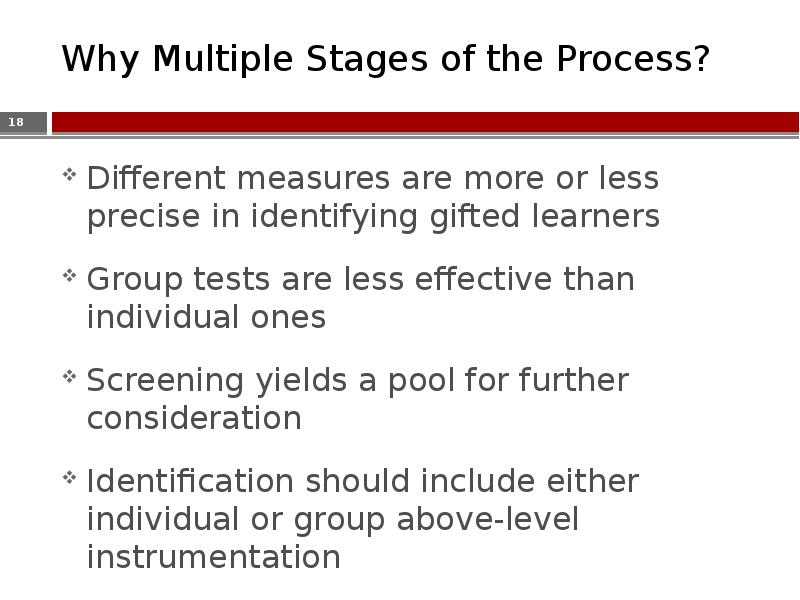











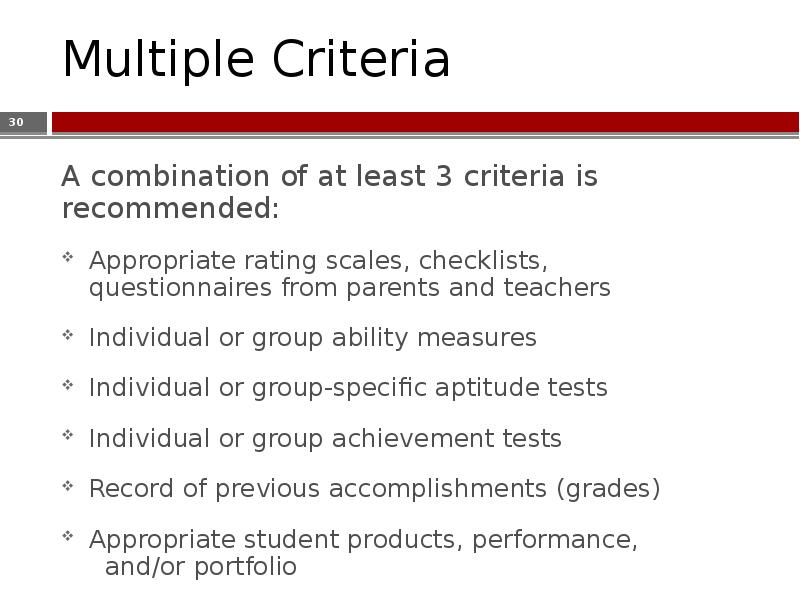






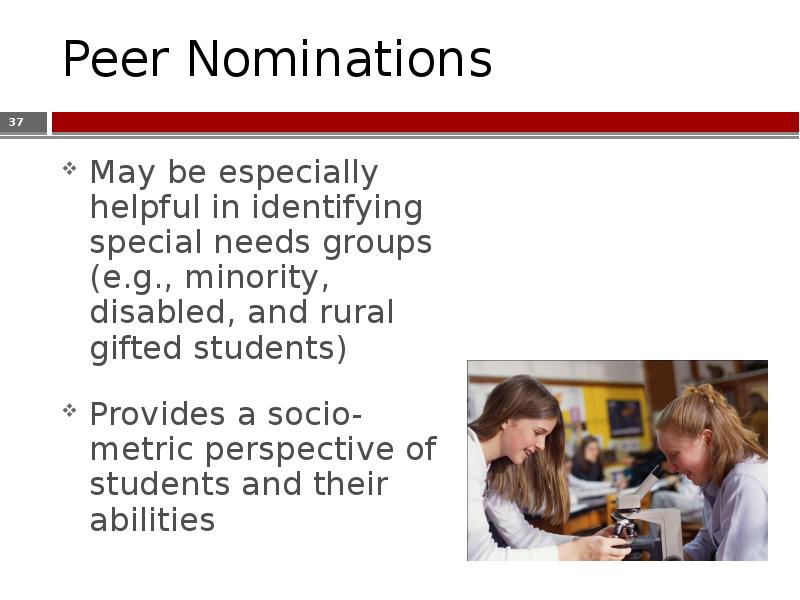




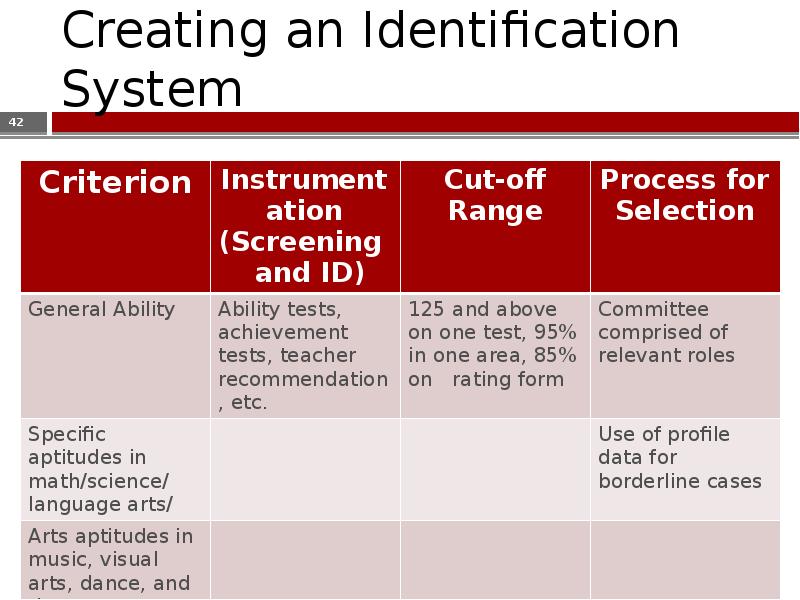



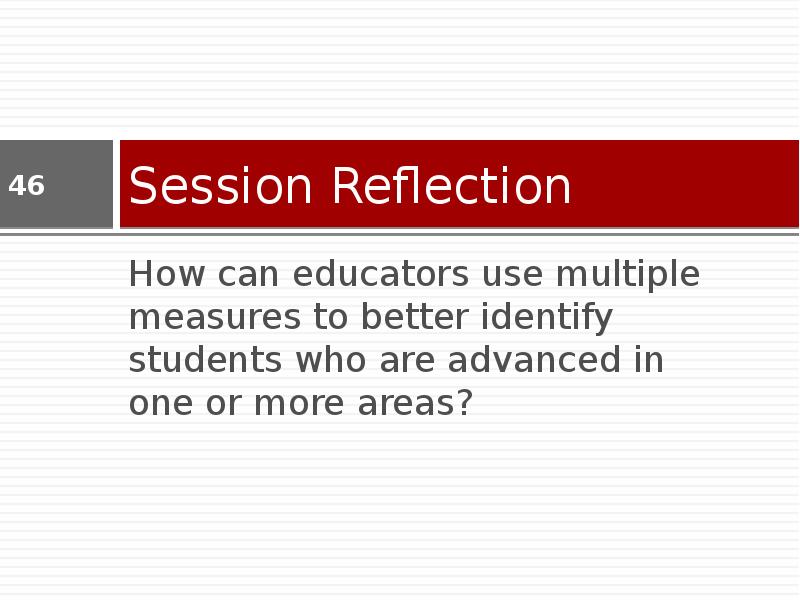
Слайды и текст этой презентации
Скачать презентацию на тему Gifted Identification as a System можно ниже:
Похожие презентации





























